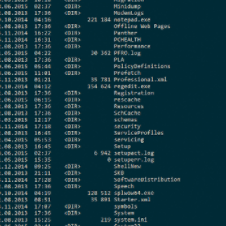
This is a fundamental question that even IBM's Watson would have trouble answering. Why use a Window Manager over a Desktop Environment? That is, they provide a method to start an application, move a window around, resize your application window and close said window. WM's are often designed to be highly customizable via configuration files or graphical settings tools, and typically do a single job: managing your application windows. Said differently, a Desktop Environment also provides a Window Manager.īy subscribing, you are agreeing to Engadget's Terms and Privacy Policy.Ī Window Manager, on the other hand, has the much more streamlined task of simply managing how you interact with your application windows without all of the extra bloat. And of course, a DE provides a means to manage your currently open application windows. Think Windows' Explorer or OS X's Finder. They often come with a desktop shell, which is a place to hold your fancy shortcut icons, as well as other tools such as file managers. DEs typically provide a handful of applications bundled together to accomplish tasks in a graphical manner as opposed to using the command line. The difference between Window Managers and Desktop Environments is pretty simple - like kindergarten-style, stay within the lines while coloring simple.Ī Desktop Environment is a fully featured graphical user interface to aid with the interaction with your operating system. Desktops Environments and Window Managers, So what's the difference anyways? Catch us after the break to join the age-old battle of choosing your GUI. We're going to get you up to speed on what each of these actually are, some reasons why you'd want to choose a WM over a DE, as well as some of the options you have among the Window Managers out there. When you boil this topic down on the basic level, you've got two choices: Use a fully featured Desktop Environment (DE) with tons of bells and whistles, or alternatively you can use a slimmed-down and streamlined Window Manager (WM).


When using Linux, or just about any open source operating system out there for that matter, there's a proverbial Santa's knapsack of graphical user interfaces (GUIs) available.


 0 kommentar(er)
0 kommentar(er)
